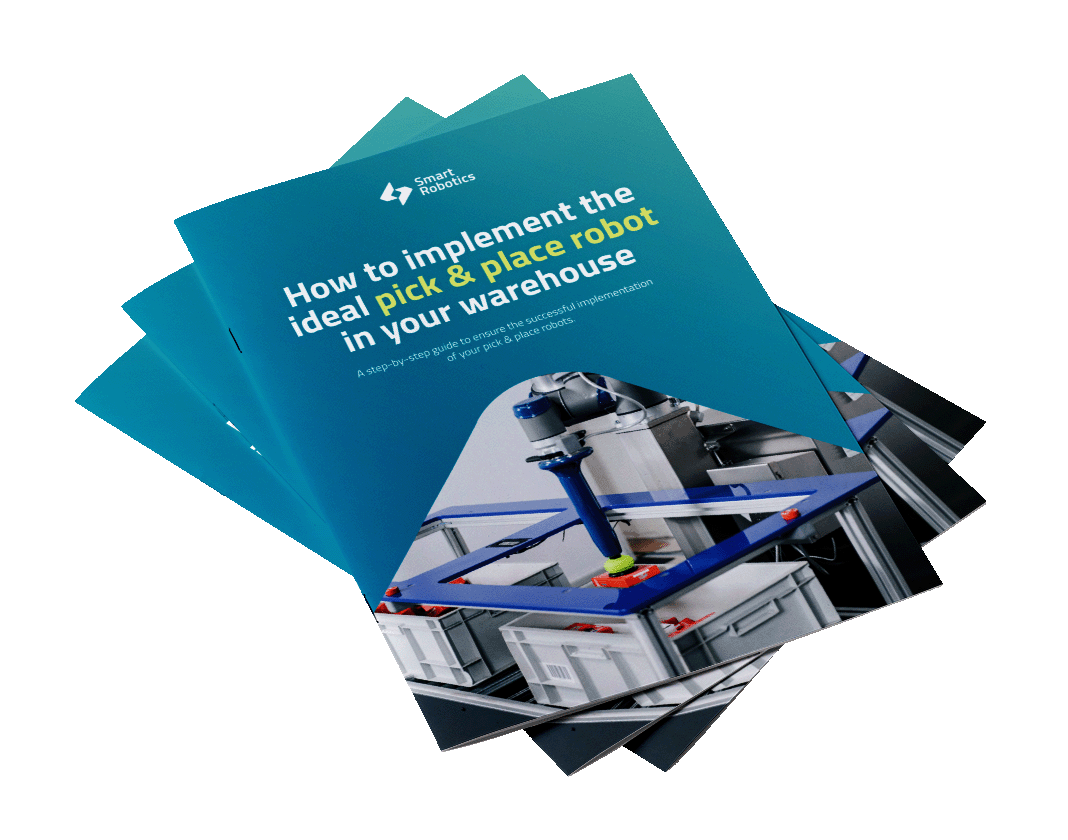Table of contents
Get in touch with our team

This site is protected by reCAPTCHA and the Google Privacy Policy and Terms of Service apply.

Intelligent motion planning to improve robot cycle time
Table of contents
To ensure the reliable operation of our pick & place solutions, we have developed the Technology Trinity at Smart Robotics. The Technology Trinity refers to our unique combination of Vision, Motion and Task Planning algorithms that allow our pick & place robots to accurately handle a large variety of items and to continuously adapt and improve efficiency. In this blog series, we will dive into the three pillars of our Technology Trinity. This second blog will focus on Motion and how our motion planning algorithms improve the performance and reliability of our robots.
What is robot motion planning?
Motion planning is a key part of robot programming, as motions take up the largest part of a robot’s cycle time. Motion planning is used to communicate to a robot how to move from A to B, e.g. from a pick position to a place position. Motion planning algorithms teach the robot answers to questions such as:
- How do I move from A to B without colliding?
- What joints do I need to move to be able to get to that position?
- What do I do if something is in my way?
Why traditional, constraint-based motion planning results in time loss.
At Smart Robotics, our pick & place robots need to do more than just move from A to B. We want them to move at a certain speed without futile waiting time and move to many different pick and place positions. Hence, our motion planner is a lot more complex than traditional, constraint-based motion algorithms.
Constraint-based motion planning means the robot can execute a movement in any way it wants, but with a set of constraints. However, this quickly becomes an annoyance. You have to think of every specific constraint you want the robot to conform to, otherwise it won’t.
That is not necessarily complex, but it takes a lot of time; both to program as well as for the robot to compute its motions. That brings about considerable waiting time per pick and place action. Let us examine this simplified example of picking an item from a tote and placing it at a fixed position on a belt, using constraint-based motion planning:
- Robot stands still whilst the 3D camera takes a picture of the pick tote.
- Vision software processes the picture and determines what item to pick as well as the best pick position.
- Motion software computes the movements needed to move to the pick position.
- Robot moves to the pick position and picks an item.
- Robot moves to the middle and stops.
- Robot stands still whilst the 3D camera takes a picture of the item the robot is holding.
- Vision software processes the picture and determines the exact dimensions of the item and determines the best place position.
- Robot moves to the place position and places the item on the belt.
The consequence is that with every pick & place action there is a lot of ‘stopping’ involved. This affects the robot’s cycle time and your fulfillment throughput. The robot waits for the required computations to be executed before it starts moving, resulting in time loss. To prevent this, customers often implement a faster robot. However, that is not always the best solution. Faster robots are more expensive, have larger footprints and need more safety measures.
Continuous motion to improve robot cycle time and reliability
That is why at Smart Robotics, we have developed our own Motion software that results in smooth, continuous motions and enables us to get the most out of our pick & place robots. In combination with our Vision and Task Planning software, we reach higher cycle times and reliable performance.
Our motion planner is not based on constraints, but on telling the robot explicitly what it can do and allows its AI to choose the fastest motion option. Besides, we empower our robots to do their computations whilst in motion. For instance, vision computations take a lot of time. Think of the robot processing an image of the pick tote and determining the number, position and material of items. A static robot during that computation is a waste of precious time. You want it to move! After all, continuous motion is always faster than ‘stop – accelerate – stop – accelerate – stop’.
The continuous motions of our pick & place robots not only results in enhanced cycle time and better throughput, it has several other benefits:
- Improved safety: especially with regards to cobot solutions. Smooth movements make a cobot more predictable, safer to work with and employees feel more comfortable around the cobot.
- Higher reliability: if a robot continuously has to ‘stop – accelerate – stop – accelerate – stop’, chances are the robot drops an item during acceleration as the force exerted on the product and the suction cup becomes too large. With continuous motion, it is easier for the robot to keep hold of an item resulting in higher reliability and gentler item handling. Furthermore, at Smart Robotics, motions speed up when the robot is not holding an item, and slow down whilst it is holding a product.
Smooth fulfillment process with advanced robot motion
With our advanced motion algorithms, we can easily adapt our pick & place robots to customer needs. Our motions are smooth and continuous. Together with our intelligent Vision and Task Planning software, our pick & place robots become more efficient, more accurate and more reliable. And that is of great importance to reach a smooth fulfilment process in your warehouse.
Get in touch with our team

This site is protected by reCAPTCHA and the Google Privacy Policy and Terms of Service apply.
Download our free white paper
Improve cycle times with a reliable pick & place robot and learn how to implement the ideal pick & place robot in your warehouse. Leave your contact details and receive a download link to our free white paper.




